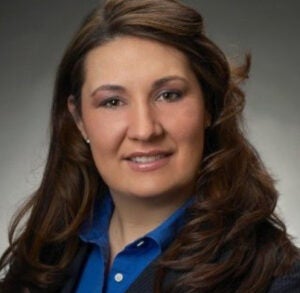 Most commerce players are going omnichannel. Myntra is going only channel.
Most commerce players are going omnichannel. Myntra is going only channel.
The Indian fashion e-tailer became an “app-tailer” on May 15, when it officially pulled the plug on its desktop site. Myntra, which is owned by Flipkart – India’s answer to Amazon – had already shut down its m.dot site in February. For Myntra’s customers, browser-based shopping is now a thing of the past. Flipkart will likely follow suit within the year.
The rationale was simple, said Abhishek Rajan, Myntra’s head of mobile.
“This is about going where our customers already are,” Rajan told AdExchanger. “The majority of our new customers are coming from mobile. Desktop is not a place where we’re seeing growth.”
That may be so, but the boldness of an app-only approach requires a seriously robust user retention strategy. No matter how much Myntra’s roughly 10 million app users love fashion, they’re probably not going to be buying clothes, accessories and footwear every day.
“We want to be more than a shopping app,” Rajan said.
That’s where user behavior data comes in. Myntra is banking on hyperpersonalization to make its app into a daily destination.
In addition to the fashion, lifestyle, celebrity and beauty content already available in the app – articles with titles like “Let’s talk ties,” “5 things that say you dress like a Bengali nerd” and “How to choose the right body mist” – one plan on the road map for September/October is to transform the app into a sort of personal style adviser so that Myntra is top-of-mind when a user wakes up in the morning and asks, “What am I going to wear today?”
Several considerations come into play when trying to answer that question, all of which mobile could ostensibly solve for, including the weather (location services), whether or not you have plans after work (access to a user’s contact book) and what items you have to choose from in your wardrobe (a user’s transaction history on Myntra coupled with a user’s ability to upload and share photos).
Personalized offers and recommendations will also be key to the success of Myntra’s app. The company is working with Bangalore-based digital CRM and retargeting company Vizury to streamline its in-app targeting and re-engagement efforts.
Vizury tags are integrated into Myntra’s backend to collect non-PII behavior data, including which products and categories a user has visited and when. That information, which Vizury stores in a database, is combined with data pulled from Myntra’s product catalog to create personalized in-app ads for non-RTB inventory. Vizury is also plugged into a bunch of different mobile exchanges, including Nexage, inMobi, MoPub, Google’s DoubleClick and Smaato in order to target users while they’re surfing on other apps.
“The whole idea is to find the right balance between retargeting the last mile conversion and handling the inactives, as in people who have not engaged with the app for the last seven to 10 days or more,” said Amjad Puliyali, Vizury’s GM in charge of India, the Middle East and Africa. “There is going to be a very different message you use for those different groups.”
Time is also of the essence, said Puliyali, referring to recent research from Appetitive, which found that when an app proactively reaches out to re-engage users within the first week after install, the average retention rate is about 57%, a number that drops precipitously to 25% if the app doesn’t do anything to re-engage its users within those critical first seven days.
“The moment an app is installed and opened, you can start capturing user behavior and identifying their interests. There are many other things we can do further up the funnel,” Puliyali said. “The industry needs to evolve so that the right measurement is in place for top-funnel activity in addition to the middle and the bottom.”
In fact, that evolution is already underway. Independent third-party analytics and attribution solutions such as TUNE, Appsflyer and Apsalar are all gaining traction in India. Myntra is one of Apsalar’s clients.
By integrating with these platforms, Vizury can get visibility into campaign ROI, as well as see how certain segments perform versus others.
“They’re not the traditional web analysis stacks that just provide app as an add-on,” Puliyali said. “They are pure experts in understanding the challenges of the mobile ecosystem.”
Which all sounds rosy. But there’s another challenge facing Myntra in its move to app-only – user backlash.
Although roughly 70% of its revenue comes from mobile sales and the majority of its customer base is comprised of tech-savvy students and young professionals under the age of 30 – many of whom likely bypassed desktop completely when they came online – not everyone is enthused by having the browser option taken away from them.
Starting on May 15, the day the desktop died, there was a rash of irate one-star reviews on Myntra’s Google Play product page, including, “Don’t like to buy ‘on-the-go,’ downloaded app only to post comment, will uninstall it;” “A total waste of [time] surfing this way. … are u out of ur mind Myntra ppls?” and “Do you think all ppl who buy from you have good phones?”
But Myntra’s Rajan is not overly concerned.
When Facebook removed the messaging functionality within its app, effectively forcing people to download its standalone Messenger app if they wanted to chat with their friends, there was a fair amount of grumbling, but it didn’t take too long for that to die down, he said, noting that something similar happened when Myntra itself killed its mobile site in February. People bristled at being “forced to download the app,” but soon got used to the idea, Rajan said.
“Once we shut off access, most mobile browser users just came to the app [and] we expect to see similar behavior” now that the desktop site has been shut down, Rajan said. “We’re going after the majority.”














